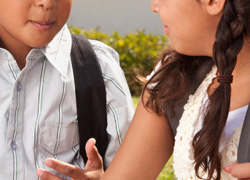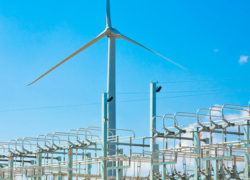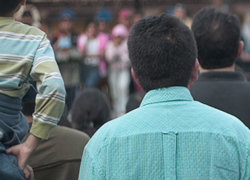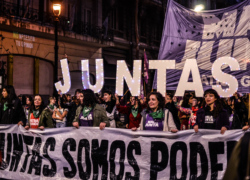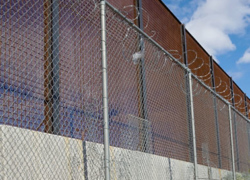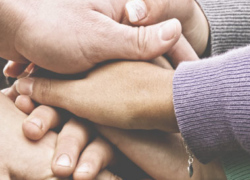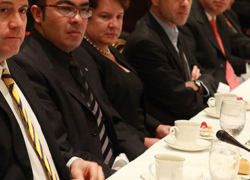This post is also available in:
Spanish
The Covid-19 pandemic has created a crisis in the education systems of Latin America and the Caribbean the likes of which has never been seen before. Throughout the region, schools have closed (or the start of the school year has been delayed) so most students are not attending face-to-face classes. While the situation is still uncertain, in most cases, school closures have been announced until the end of April. Depending on how the health situation progresses, the closure may need to be extended for even more time.
This widespread situation of “educational stress” will most likely have negative impacts on learning outcomes, given that no country is adequately prepared to move to large-scale virtual education as a replacement for traditional, face-to-face education. A major concern is the exacerbation of educational inequity, as children from lower-income households will be less likely to have the resources necessary to take advantage of limited opportunities for virtual education. At the same time, extended school closures will have harmful effects on food availability in households with limited resources, where schools often provide supplementary nutrition and assistance through feeding programs. Furthermore, extended quarantines in overcrowded conditions can be conducive to intensifying domestic violence and abuse that affect children physically and/or socio-emotionally.
Given the current situation, and considering the capacity constraints in most education systems in the region, what solutions can mitigate the negative impacts of school closures?
First and foremost, educational authorities—in addition to leading efforts to ensure continuity in virtual learning—must utilize their essential role as regulators to effectively develop and communicate strategic guidelines for the educational community as a whole. Given the ever-changing situation, families, students, and teachers need to know what is expected of them and under what basic criteria they should operate. Critical information such as the duration of the closure of schools and the standards for graduation, grade promotion, grades and exams should be communicated clearly and transparently to avoid confusion and provide guidance to all members of the educational community.
There is no doubt that, given the diversity of contexts and capacities across the countries of the region, there is hardly a single response that would make distance learning possible for all students. No country in the region has the connectivity, teaching platforms, or practical experience necessary to ensure that all children receive the same virtual education in these circumstances. In other words, it is necessary to consider a myriad of options, which include virtual classes, the use of applications (including through cell phones and not only computers and tablets) and videos, among others. The platforms developed by education authorities in Chile, Colombia, Peru and Uruguay illustrate these multiple approaches to virtual education.
Many of these services are widely available, and numerous providers are opening access to their platforms for free, given the current situation. Nevertheless, connectivity constraints are very serious and leave many households with limited options, not just those in poverty. It is therefore very important that telecommunications companies offer special plans that allow access to free or highly subsidized data packages for educational use.
The obvious interest in new technologies should not make us forget the role that more traditional methods of distance learning such as TV and radio can provide. Examples such as 3-2-1 Edu-Action in Colombia, or radio and TV programming promoted in Peru, are illustrative of these approaches. While ministries of education play an important part in promoting these resources, commercial television and radio companies can also take on a more proactive role in this area.
In all the commotion to expand virtual learning options, it is essential not to forget about teachers. Whether accompanying students in using online platforms, email or text messages, teachers should not be pushed to the side in this emergency. Part of the answer to ensuring continuity of educational processes should be directed towards giving teachers the necessary support so that they are better prepared to respond to their students even while social distancing. The challenge for teachers is twofold: learning to use new technologies and redesigning the format of their classes for virtual learning. Both Uruguay and Costa Rica provide good examples of the resources that are available to teachers.
Unlike the health sector, which is experiencing a sharp increase in demand for qualified personnel, for the education sector the current situation does not require new staff, but rather a strong emphasis on building socio-emotional and leadership skills. In fact, this crisis makes clearer than ever the urgent need to transform the teaching profession from one that is based on an information-transfer model into a model for facilitating skill acquisition.
Parents and caregivers are key players in ensuring the continuity of educational processes. For most of them, this is a task for which they are not prepared and, often, one that they must balance with many other responsibilities. Therefore, the proposals that education systems put forth for virtual learning must be mindful of the role of these adults and do their best to support them in this new responsibility. Again, there must be continuous and transparent communication to avoid ambiguities and confusing messages. During this emergency, civil society organizations, especially those already working on a regular basis in low-resource neighborhoods and with vulnerable populations, can direct their efforts to accompany and support parents to ensure educational continuity, as well as offering support to children who need it most.
Sooner or later, this emergency will end. Even in these early days, it has already shown us that we must invest more and better in teaching models that incorporate new (and old) communication and information technologies into educational processes. In this sense, it will be essential to continue the many ongoing efforts that education authorities are implementing in response to the health emergency.
RELATED LINKS
Covid-19 in the Americas: The Dialogue’s Coronavirus Updates
Educational Robotics
Transforming Learning Through the Use of Educational Technologies
Technology and Innovation



